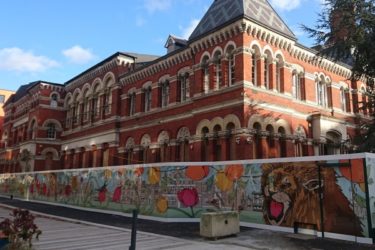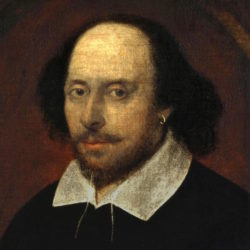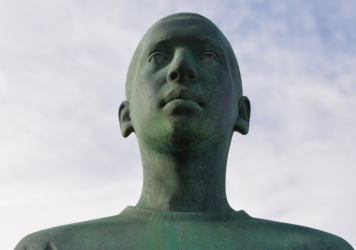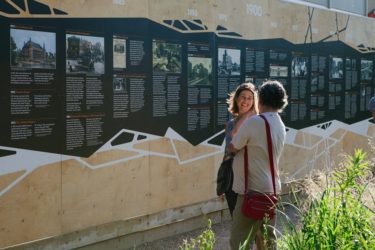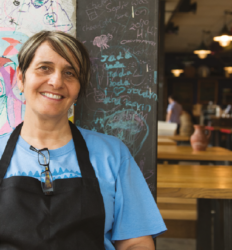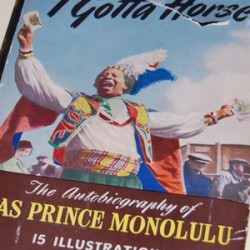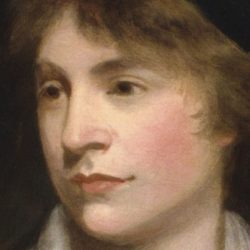Yet it was here that a group of working class teenagers and young men created a movement that would soon become known as the Teddy Boys or more simply, Teds.

Today, almost seventy years later, the Ted culture lives on. And the Teddy Boy uniform of drape coat with velvet-trim collar and pocket flaps, bootlace tie, highwaisted drainpipe trousers, crepe-soled shoes (brothel creepers) and big hair, moulded into greasy Brylcreem quiffs, has changed remarkably little.
Today’s Teddy Boys are a gentle lot, but when the Elephant and Castle Teds first came to attention, they quickly attracted media notoriety; largely due to their flash fashion, a refusal to acknowledge their ‘betters’ and their raucous behaviour. Here, in post-war Britain, still a society bound by class and conformity, was a bunch of rebels without a cause.
The original Teds based their style on a craze for Edwardian clothing that had taken hold amongst upper class men. These were wealthy youngsters with money to spare for the new (albeit retro) suits that Saville Row tailors had reintroduced after WW2. Short for Edward, the style soon became known as Ted.
The idea of aristocratic youths, swanning around Mayfair in expensive suits, might seem a world away from the working classes of 50s Walworth. Nonetheless, young locals quickly began to adopt elements of the new style and made it their own.
Initially, the look couldn’t simply be purchased off the peg, while employing a tailor to make the bespoke drape coats and trousers could cost as much as £50 – more than five weeks’ wages for the average man. Consequently, being a Ted was quite a commitment and many paid off their clothing bills via a weekly tab while others resorted to more dubious means.
Rock n Roll propelled them into the spotlight
The emergence of the Elephant’s Teds was picked-up by the tabloid press which regarded these tough young men, dressed in their flash clobber, as something of a novelty. But it was the arrival of American rock ‘n’ roll which gave the Teds their own soundtrack and propelled them into the national spotlight.
Bill Haley & His Comets entered the UK singles charts with Shake, Rattle and Roll in late 1954 and then exploded into the national consciousness in January 55 when their record, Rock Around The Clock roared up the charts (four months before doing the same in the US).
In 1956, when Blackboard Jungle, a Hollywood film which featured Haley’s song in the opening credits, screened at the Trocadero (a 3,000 seat cinema and live music venue on New Kent Road) the local Teds grabbed their girlfriends and jived in the aisles, while a handful made trouble and slashed the seats.
Their behaviour hit the headlines, leading to copycats elsewhere and feeding a growing moral panic about rock ‘n’ roll and delinquency. Later that year, when Bill Haley arrived in London to play his first UK dates, the local Teds headed over to Waterloo Station to greet him, along with a couple of thousand excited teenagers. This created even bigger headlines.
But Haley’s time in the spotlight was brief. Younger, more exciting rockers would soon be inspiring Britain’s teenagers. One of these was the Texan, Buddy Holly who played the debut concerts of what would be his only UK tour at The Trocadero on 1 March 1958 (two performances in one night). The Teds were a notoriously tough crowd (they threw coins at Cliff Richard when he appeared at the same venue) but they loved Buddy Holly and his band, The Crickets.
The Trocadero played host to many of the big international stars of the 50s, including Frank Sinatra and Ella Fitzgerald. At the same time, a new generation of local talent was emerging from the surrounding neighbourhood. Bermondsey’s Tommy Hicks first met the songwriters Lionel Bart and Mike Pratt at a bohemian hangout known as the Yellow Door and the trio soon began performing nearby at The Cave – a coffee bar on Waterloo Road – under the name The Cavemen.
Bart would go on to write West End musicals (including Oliver!) while Hicks would rename himself Tommy Steele and become Britain’s first rock ‘n’ roll star and the first to have a top 40 hit in America. Not that the Teds thought much of Steele, as far as they were concerned – only the Americans could really rock.
The Teddy Boys were the first of several generations of British youth to mould their own, group identities around fashion, dance, slang and the very latest music. In the following decades, the Elephant would bear witness to a succession of youth movements and sounds, from mods to ravers; from garage to grime. But it was the Elephant’s Teds who pioneered British youth culture, the ones who got it started – the ones who got things rocking and rolling!
Mark Baxter on the Teds

The local author and documentary maker recalls how his father’s generation adopted the style.
“My old man was born in 1934 so would have been twenty when rock ‘n’ roll and the Edwardian look began to hit” says Baxter.
From what he told me, it was the clothes and haircut – the legendary DA (or Duck’s Arse) – which he and his pals adopted.
From what I gather, there were some ‘tasty’ Teddy Boy gangs around Elephant and Castle but, knowing my dad, that wasn’t something that would have interested him. He was a music and style man. He wasn’t into trouble and he certainly wouldn’t have risked ruining the line of his jacket.
I know he had his suits made at Levy’s in the Elephant and from Albie in The Cut. The cloth they would have had made up would be ‘customer’s own’. Where they got that from is lost in the mists of time.
He loved a shirt with a ‘Billy Eckstine Collar’. Detail was all and he remained a fussy dresser to the end of his life. His hair would have been taken care of by one of the many barbers on the Walworth Road and in Camberwell, with a ‘Tony Curtis’ requested when that became the Barnet of choice.
My mum, also a Camberwell girl, was born in 1936 and she too was a bit of a music nut. Guy Mitchell and Johnny Ray were her faves. Her clothes were made by ‘Betty’ who I remember still making bespoke clothes well in to the 70s and early 80s.”
